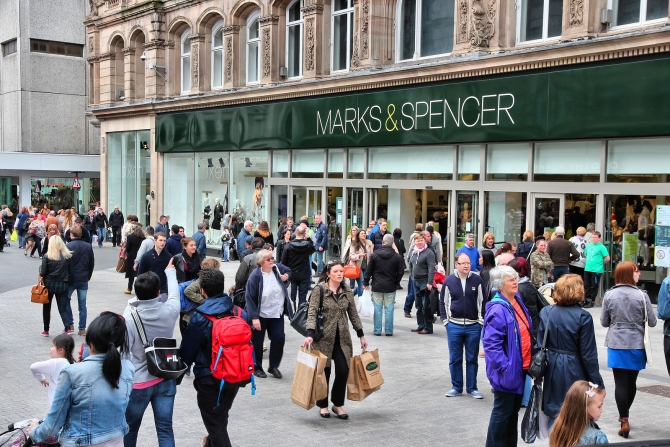Marks & Spencer, once one of the key players on the high street, has had a difficult time of late, with a lack of consumer enthusiasm for new clothing lines and increased competition causing the 130 year old retailer to fall behind key rival Next for the first time in history. However, this has not proved to be a deterrent when it comes to international expansion, as chief executive Marc Bolland is now eyeing a number of new options for stores in Scandinavia.

Since taking the top job in 2010, Mr Bolland has placed a heavy emphasis on overseas markets and in only four years has introduced the Marks & Spencer brand to countries such as France, China and the Netherlands. As a result, Marks & Spencer now has 160 stores in Europe and has set a new target to lift its international store portfolio to 250 outlets by 2016.
The Scandinavian openings will play a large part in the international push, as the retailer intends to open a total of 15 stores: eight in Norway and seven in Finland. One store in each country will become a flagship, with the Helsinki flagship due to open next month and the Oslo branch opening scheduled for late November.
Regional director of Europe at Marks & Spencer, Francois Smeyers, believes the push into Scandinavia will prove invaluable for the brand’s growth in the coming years.
He says; “Expanding our reach to Scandinavia, which we see as an important international market for us, is a central part of our ongoing international growth strategy in Europe.
“We are delighted to be opening our first stores in the region over the next few months.”
Rather than controlling the Scandinavian arm directly, the stores will be run on a franchise basis, giving Marks & Spencer the benefit of working with existing retail organisations familiar with the consumer market “on the ground.”
Leading Finnish retailer S Group, which operates 1,600 stores in the region, will take responsibility for the stores within Finland, while Norway’s portfolio will be overseen by the Pocos Group.
This ties well into Marks & Spencer’s existing strategy for international expansion, as the group has already made public its desire to work with leading retailers across the globe. Eventually, Marks & Spencer hopes that around 60 per cent of its overseas portfolio will be operated through franchise partnerships.
Chief executive Tristan Rogers of Concrete, which provides retailers with advice and assistance regarding international expansion, believes this strategy could build solid foundations for Marks & Spencer worldwide.
He says; “Marks & Spencer’s international strategy is well established, growing and profitable.
“With great performing stores spread out over mainland Europe, Scandinavia is a natural next step for a retailer that is looking to capitalise on the increased consumer appetite in the region.”
Previous Post
European Investors turn to REITs in Record Numbers